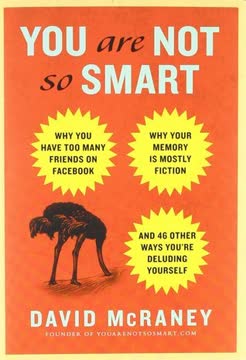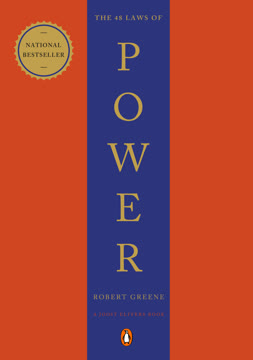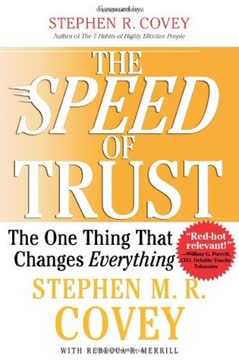Key Takeaways
1. Embrace the 3rd Alternative: Move Beyond Win-Lose Thinking
"The 3rd Alternative is about creating a new and better reality that is far better than the old reality."
Transcend limitations. The 3rd Alternative is a paradigm shift in problem-solving that moves beyond the constraints of win-lose or compromise thinking. It seeks solutions that are better than what either side initially proposed, creating a new reality that benefits all parties involved.
Create synergy. This approach is based on the principle of synergy, where the whole is greater than the sum of its parts. By combining diverse perspectives and ideas, we can generate innovative solutions that address complex challenges in ways that traditional either-or thinking cannot.
Transform relationships. Embracing the 3rd Alternative transforms relationships by fostering collaboration rather than competition. It encourages people to work together to find mutually beneficial outcomes, leading to stronger, more productive partnerships in all areas of life.
2. See Yourself: Cultivate Self-Awareness and Personal Responsibility
"If you want to improve your marriage, look in the mirror."
Take responsibility. The first step in finding 3rd Alternatives is to recognize our own role in creating and perpetuating conflicts. By examining our assumptions, biases, and reactions, we can begin to shift our perspective and open ourselves to new possibilities.
Embrace freedom of choice. Understanding that we have the power to choose our responses to any situation is crucial. This awareness allows us to move beyond victim mentality and take proactive steps towards positive change.
Develop inner security. Cultivating a strong sense of self-worth and personal integrity enables us to engage with others without feeling threatened by different viewpoints. This inner security is essential for creating the trust and openness necessary for synergistic solutions.
3. See Others: Value Differences and Practice Empathy
"To say 'I see you' means saying 'I acknowledge your unique individuality.'"
Recognize inherent worth. Seeing others as whole persons with inherent value, rather than as objects or obstacles, is fundamental to the 3rd Alternative approach. This perspective shift allows us to appreciate the unique contributions each individual can make.
Celebrate diversity. Instead of merely tolerating differences, actively valuing diverse perspectives and experiences enriches our understanding and expands the possibilities for creative solutions.
Practice Ubuntu. Embrace the African concept of Ubuntu, which recognizes that our humanity is inextricably bound up in others. This interconnected worldview fosters empathy and mutual respect, essential ingredients for synergistic problem-solving.
4. Seek Others Out: Listen Actively and Understand Deeply
"You can't do this sort of thing in ten minutes. They have to know that you understand them before they'll trust you."
Practice empathic listening. Actively seek to understand others' perspectives by listening without judgment or interruption. Use techniques like reflective listening and asking clarifying questions to ensure you've fully grasped their point of view.
Suspend assumptions. Set aside preconceived notions and biases to truly hear what others are saying. This openness allows for new insights and unexpected connections to emerge.
Create psychological safety. Foster an environment where people feel safe to express their thoughts and feelings without fear of ridicule or reprisal. This trust is essential for honest, productive dialogue that can lead to transformative solutions.
5. Synergize: Create Better Solutions Together
"Synergy is what happens when one plus one equals ten or a hundred or even a thousand!"
Embrace creative tension. Rather than avoiding conflict, harness the energy of differing viewpoints to generate new ideas. This creative tension can spark innovative solutions that transcend the original positions.
Prototype and iterate. Use rapid prototyping techniques to quickly test and refine potential solutions. This iterative process allows for continuous improvement and adaptation as new insights emerge.
Leverage diverse strengths. Recognize and utilize the unique talents and perspectives of all team members. By combining complementary skills and knowledge, teams can achieve results far beyond what any individual could accomplish alone.
6. Transform Conflict into Opportunity: Apply 3rd Alternative Thinking
"If you're not hard on crime, you're soft" was the message he constantly had to confront."
Reframe the problem. Instead of seeing conflicts as win-lose battles, reframe them as opportunities for growth and innovation. This shift in perspective opens up new possibilities for creative problem-solving.
Focus on shared goals. Identify common objectives and values that all parties can agree on. This shared foundation provides a starting point for collaborative solution-finding.
Create a "Magic Theater." Establish a space for free-flowing ideation where all ideas are welcome and judgment is suspended. This environment encourages creative thinking and allows for unexpected connections to emerge.
7. Revolutionize Education: Develop Leaders, Not Just Learners
"To develop global leaders one child at a time."
Cultivate leadership qualities. Focus on developing essential leadership skills such as initiative, problem-solving, and effective communication alongside traditional academic subjects.
Empower students. Give students opportunities to take ownership of their learning and make meaningful contributions to their school and community. This hands-on approach builds confidence and practical skills.
Create a culture of excellence. Set high expectations for all students while providing the support and resources they need to succeed. Foster a growth mindset that encourages continuous improvement and resilience.
8. Reimagine Justice: Shift from Punishment to Restoration
"Justice fails to be done only if the concept we entertain of justice is retributive justice, whose chief goal is to be punitive."
Focus on healing. Shift the emphasis from punishment to restoration, addressing the needs of both victims and offenders. This approach aims to repair harm and rebuild relationships rather than simply meting out penalties.
Promote accountability. Encourage offenders to take responsibility for their actions and make amends. This process fosters personal growth and reduces the likelihood of repeat offenses.
Build community involvement. Engage the wider community in the justice process, recognizing that crime affects and is affected by social relationships. This collaborative approach can lead to more sustainable, long-term solutions.
9. Tackle Social Challenges: Find Innovative Solutions Through Synergy
"The real job to be done is not to cure sickness but to prevent it."
Address root causes. Look beyond surface-level symptoms to identify and address the underlying factors contributing to social problems. This approach leads to more effective, sustainable solutions.
Leverage cross-sector collaboration. Bring together diverse stakeholders from government, business, non-profit, and community sectors to tackle complex social issues. This collaborative approach harnesses a wider range of resources and perspectives.
Prioritize prevention. Shift focus and resources towards preventative measures rather than reactive solutions. This proactive approach can lead to significant long-term cost savings and improved outcomes.
10. Heal the Environment: Balance Progress with Preservation
"Can we achieve 'win-win' rather than 'zero-sum' solutions to development-environment conflicts?"
Adopt a holistic perspective. Recognize the interconnectedness of environmental systems and human activities. This comprehensive view allows for more effective, sustainable solutions that balance economic progress with environmental preservation.
Innovate for sustainability. Encourage technological and social innovations that promote both environmental health and human well-being. Look for creative solutions that turn waste into resources or reduce environmental impact while improving quality of life.
Engage local communities. Involve local populations in environmental conservation efforts, recognizing their unique knowledge and stake in preserving their natural surroundings. This participatory approach leads to more effective, culturally appropriate solutions.
11. Eradicate Poverty: Unleash Human Potential Through Empowerment
"The key to life is not accumulation but contribution—not building up material goods but service to others."
Foster self-reliance. Focus on empowering individuals and communities with the skills, resources, and opportunities they need to lift themselves out of poverty. This approach builds long-term resilience and independence.
Promote inclusive economic growth. Develop economic policies and practices that create opportunities for all segments of society, particularly marginalized groups. This inclusive approach can lead to more sustainable, equitable development.
Invest in human capital. Prioritize education, healthcare, and skill development as key strategies for poverty reduction. By investing in people, we unlock human potential and create a foundation for lasting prosperity.
Last updated:
FAQ
What's The 3rd Alternative about?
- Core Concept: The 3rd Alternative by Stephen R. Covey introduces a mindset that transcends traditional binary thinking, encouraging solutions that are better than existing options.
- Application Across Contexts: Covey illustrates how this approach can be applied in various areas of life, including personal relationships, work, and societal issues.
- Empathy and Synergy: The book emphasizes the importance of empathy and synergy in creating effective solutions, fostering collaboration and understanding.
Why should I read The 3rd Alternative?
- Transformative Mindset: The book helps shift your perspective from scarcity to abundance, encouraging creative solutions in challenging situations.
- Practical Tools: Covey provides practical tools and frameworks, such as the "4 Steps to Synergy," to foster better relationships and solve problems effectively.
- Real-World Examples: Numerous real-life examples and case studies demonstrate the effectiveness of the 3rd Alternative approach.
What are the key takeaways of The 3rd Alternative?
- Synergy Over Compromise: True solutions come from synergy, not compromise, leading to win-win scenarios where everyone benefits.
- Empathy is Essential: Empathic listening and understanding others' perspectives are crucial for achieving synergy and resolving conflicts.
- Personal Responsibility: The book emphasizes the need for personal responsibility in creating change and fostering collaboration.
What is the "3rd Alternative" method defined in the book?
- Definition: The "3rd Alternative" is a problem-solving approach that seeks solutions beyond traditional binary options, encouraging creative, synergistic solutions.
- Contrast with 2-Alternative Thinking: Covey contrasts this with "2-Alternative" thinking, which limits options and often leads to conflict.
- Practical Application: The method can be applied in various contexts, fostering collaboration and understanding through numerous examples.
How does The 3rd Alternative apply to personal relationships?
- Treasure Differences: Covey emphasizes the importance of valuing differences in relationships, viewing them as sources of creativity rather than obstacles.
- Creating Unique Cultures: Couples and families can create a "3rd Alternative culture" that values each member's unique contributions.
- Conflict Resolution: Strategies for resolving conflicts include promoting empathy and understanding, seeing each other as individuals with unique experiences.
How can I create a 3rd Alternative in my life?
- Self-Reflection: Begin with self-awareness and a willingness to take responsibility for your actions.
- Empathic Listening: Practice empathic listening to understand others' perspectives and foster collaboration.
- Collaborative Problem-Solving: Engage in collaborative problem-solving by inviting others to contribute their ideas and insights.
What role does empathy play in The 3rd Alternative?
- Foundation of Understanding: Empathy is crucial for understanding others’ perspectives and resolving conflicts.
- Building Relationships: It helps build stronger relationships by fostering trust and respect, encouraging collaboration.
- Transforming Conflicts: Empathy can transform conflicts into opportunities for growth and connection.
How does The 3rd Alternative address societal issues?
- Collective Responsibility: Societal issues require collective responsibility and collaboration, moving beyond reliance on government or institutions.
- Empowerment of Communities: Empowered communities can create positive change and improve quality of life through synergy and collaboration.
- Innovative Solutions: Covey provides examples of innovative solutions to societal problems that emerge from 3rd Alternative thinking.
What are the four paradigms of synergy in The 3rd Alternative?
- I See Myself: Emphasizes self-awareness and understanding one’s own biases and motivations.
- I See You: Focuses on recognizing and valuing the individuality of others, promoting empathy and respect.
- I Seek You Out: Encourages actively seeking out differing perspectives and understanding them.
- I Synergize With You: Involves working together to create solutions better than either party could imagine alone.
How can I implement the "4 Steps to Synergy" in my life?
- Ask the 3rd Alternative Question: Start by asking if others are willing to seek a better solution than any previously considered.
- Define Criteria of Success: Work with others to define what success looks like for everyone involved.
- Create 3rd Alternatives: Brainstorm creative solutions together, encouraging open-mindedness and collaboration.
- Arrive at Synergy: Evaluate proposed solutions and choose the one that meets the criteria of success.
What are some examples of successful 3rd Alternatives from The 3rd Alternative?
- Harish Hande’s Solar Power: Created a low-cost solar power system for impoverished communities in India, transforming lives by addressing energy needs.
- LEGO’s Customer Engagement: Embraced customer feedback by allowing fans to design products, leading to a collaborative business model.
- Panera Cares Cafés: Introduced cafés where customers pay what they can, ensuring access to meals and fostering community goodwill.
What are the best quotes from The 3rd Alternative and what do they mean?
- “The significant problems we have cannot be solved at the same level of thinking with which we created them.”: Emphasizes the need for a paradigm shift in thinking to address complex issues.
- “Synergy is when the whole is greater than the sum of the parts.”: Highlights that collaboration can lead to extraordinary outcomes that individuals cannot achieve alone.
- “You see things differently. I need to listen to you.”: Reflects the importance of empathy and understanding in resolving conflicts, encouraging diverse perspectives.
Review Summary
The 3rd Alternative presents Covey's approach to creative problem-solving and conflict resolution. Readers praised its potential to transform relationships and society, though some found it repetitive. The book emphasizes finding innovative solutions beyond compromise by truly understanding others' perspectives. Many reviewers considered it essential reading, particularly given current social divisions. While some felt it could have been more concise, most found value in its principles and real-world examples across various domains, from family to global issues.
Similar Books










Download PDF
Download EPUB
.epub digital book format is ideal for reading ebooks on phones, tablets, and e-readers.













